Affiliate links on SoundGuys may earn us a commission. Learn more.
What makes a great pair of workout earbuds?
Whether you’re a professional athlete or of the couch-to-5K variety, it’s important to invest in a dedicated pair of workout earbuds. When you listen to music during a workout, motivation skyrockets—the right beat can even increase your pain tolerance too. Sure, you might already own a great pair of earbuds but if your sweat seeps through the casings and onto the internals, it could be game over for your favorite buds. It’s not worth the risk, especially as workout earbuds are only becoming more affordable.
Let’s learn about the benefits of dedicated workout earbuds and all the features you should look out for in your next set.
Editor’s note: this article was updated on March 11, 2022, to include a contents menu and answer questions in the FAQ section.
What are workout earbuds? How are they different from regular earbuds?
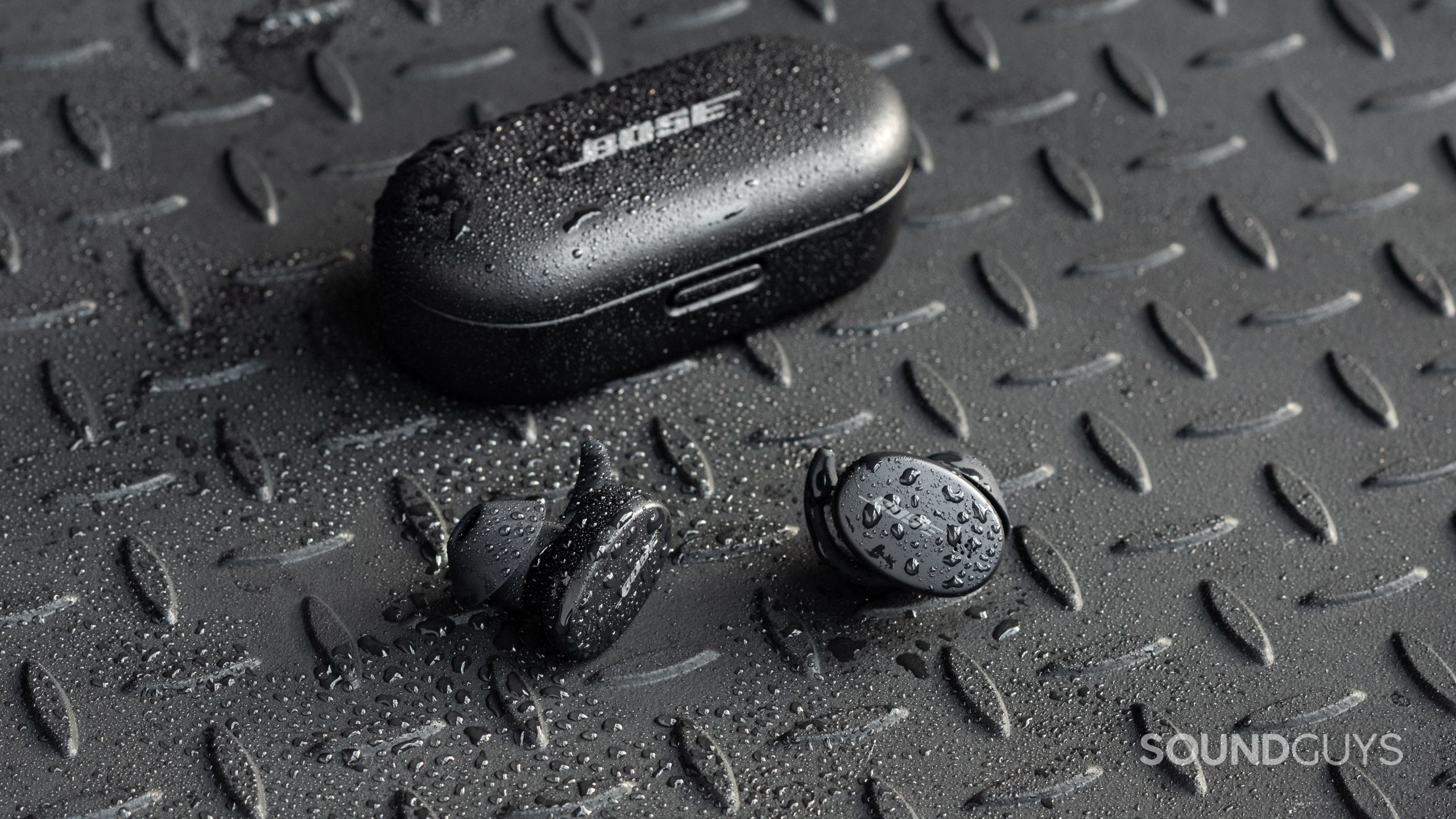
Chances are that you already own a pair of earbuds or headphones that you use regularly, so why not use that same pair for exercise too? Well, while you can use any pair of earbuds or headphones for working out, you may run into some complications or, worse yet, damage the headset altogether. If you can swing it financially, we highly recommend that you pick up a dedicated set of earbuds for exercise so you don’t curtail the life of your beloved daily use headset.
See, workout earbuds differ from standard earbuds, be it wired or wireless, because they’re built with a specific use case in mind. When a company brands a particular headset with the “workout” moniker, it usually indicates a certain level of durability and a secure fit. Some workout earbuds even have features like specifically designed ear tips to keep you aware of your surroundings, or reflective strips to keep you visible in the dark.
Start here: Ultimate headphone buying guide
You can still use workout headphones or earbuds in normal settings like your daily commute or in the library, but it might look a bit out of place or feel uncomfortable after an hour. It’s also important to remember, that most workout earbuds don’t have the best sound quality, because your money goes elsewhere—again, toward a durable build and safety features. This is fine though, as many of us generally prefer amplified bass notes for exercise and general listening.
What is an IP rating, and why does it matter for workout earbuds?
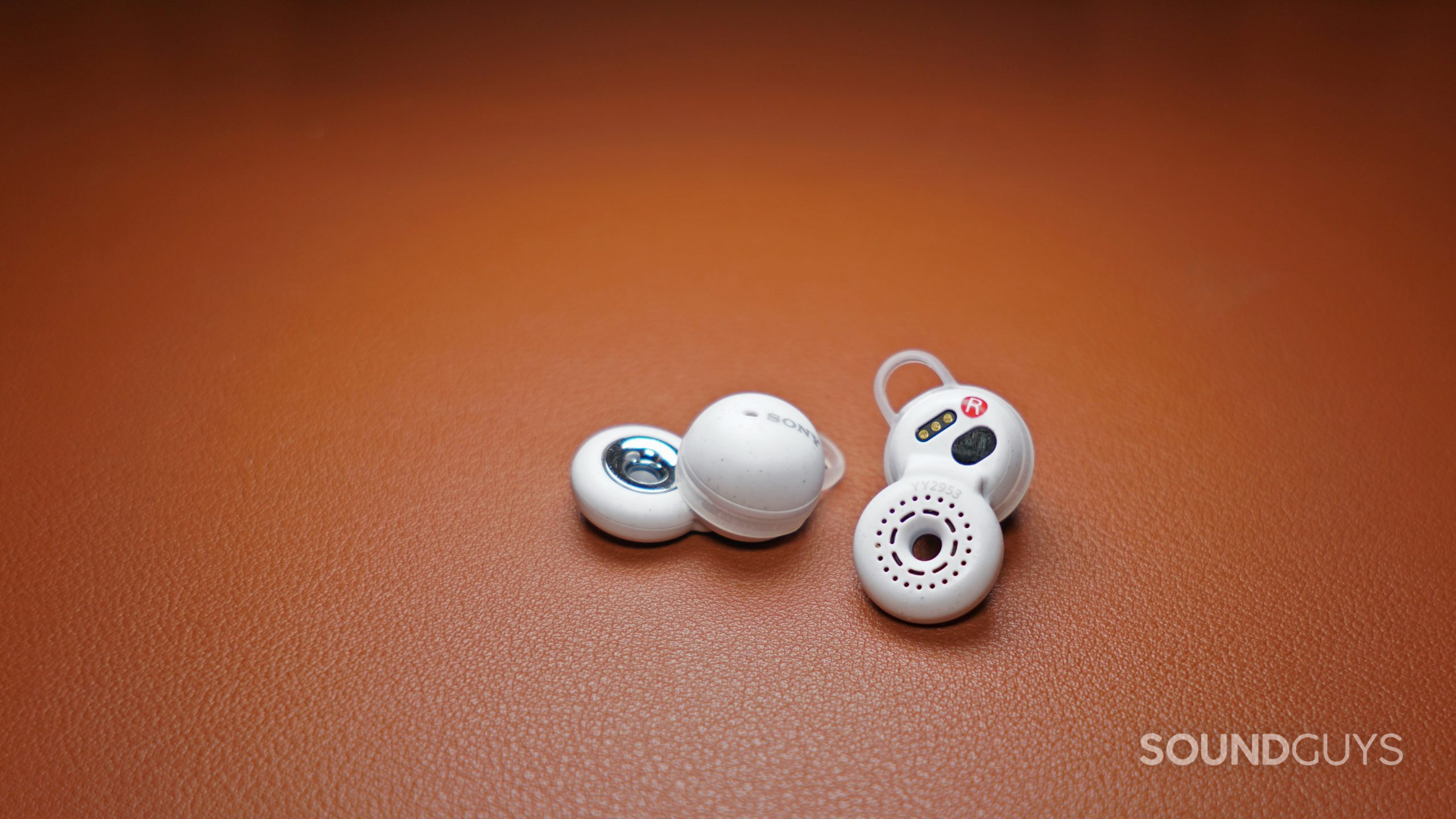
An Ingress Protection (IP) rating denotes a product’s dust- or water-resistance level. The standard water-resistant rating is IPX4, and the “X” is a placeholder for a dust-resistance rating. Dust resistance is a less common feature, but an important one for rock climbers and gymnasts who like to train with music. If a product has a rating between IPX1-IPX6, the earbuds are water-resistant but can’t be submerged. Any grade IPX7 or above means you can submerge the headset under certain conditions and for a limited stretch of time.
How should workout earbuds fit?
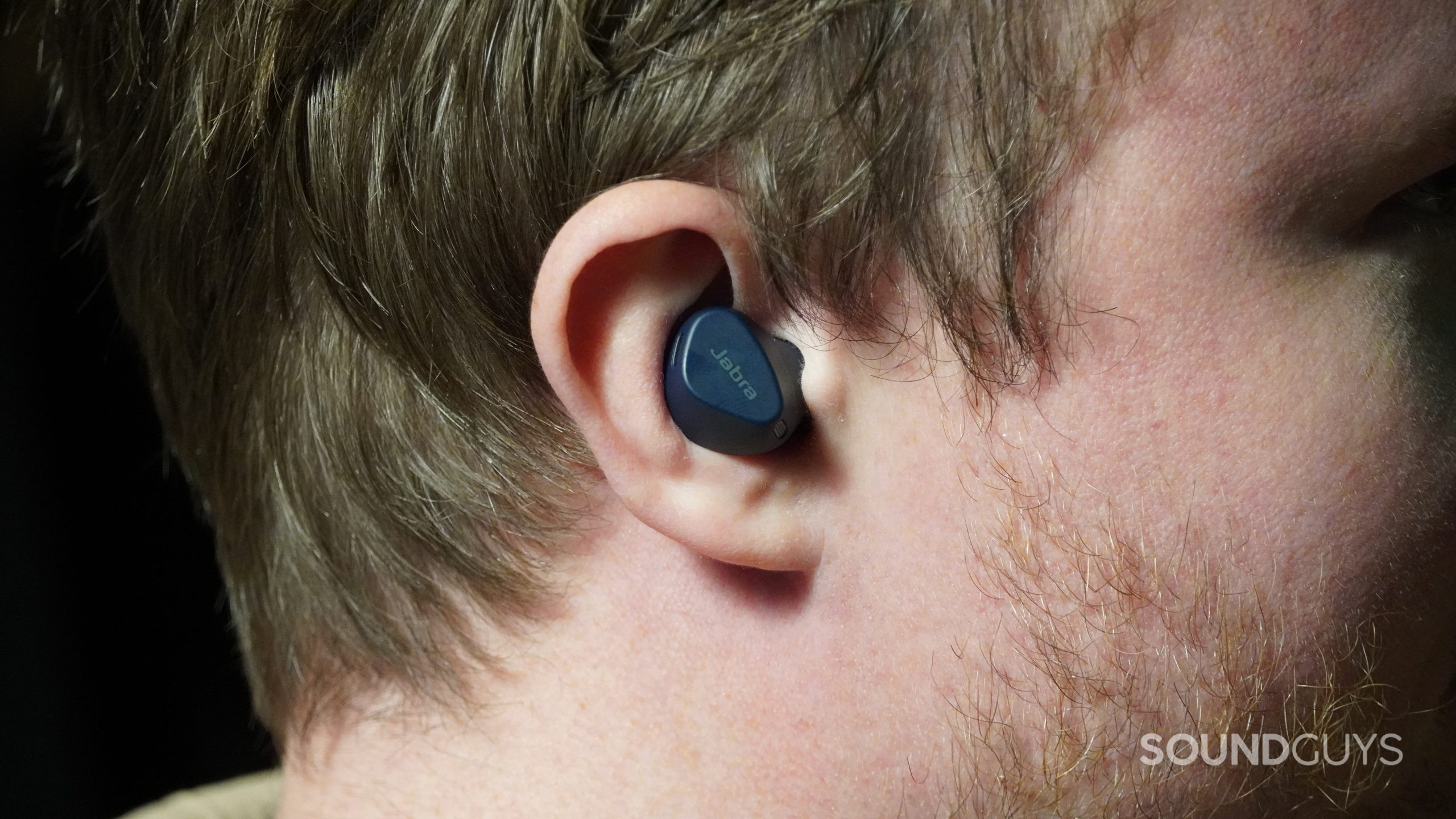
A pair of running earbuds may fit differently than a pair of more broadly used workout earbuds. If you typically exercise at the gym, you may prefer earbuds that seal to your ear to better block out the clang of barbells dropping. This design is different from some running earbuds with open-fit nozzles that don’t seal to the ear. This intentional design is to keep you aware of your surroundings, and safe from oncoming traffic.
Neither design is inherently better than the other, and no matter which design you choose, the earbuds should feel stable when you shake your head. Typically open-fit earbuds use ear hooks to keep the buds in place, and sealed earbuds usually feature a rubberized underside (e.g., Jabra Elite 7 Active) or interchangeable wing tips (e.g., Jaybird Vista 2). Wing tips are great because they keep the earbuds compact, but they can create too much friction against your concha or tragus, which may cause pain.
Learn more: How to prevent pain and infection when wearing earbuds
True wireless vs wireless earbuds: What should workout earbuds look like?
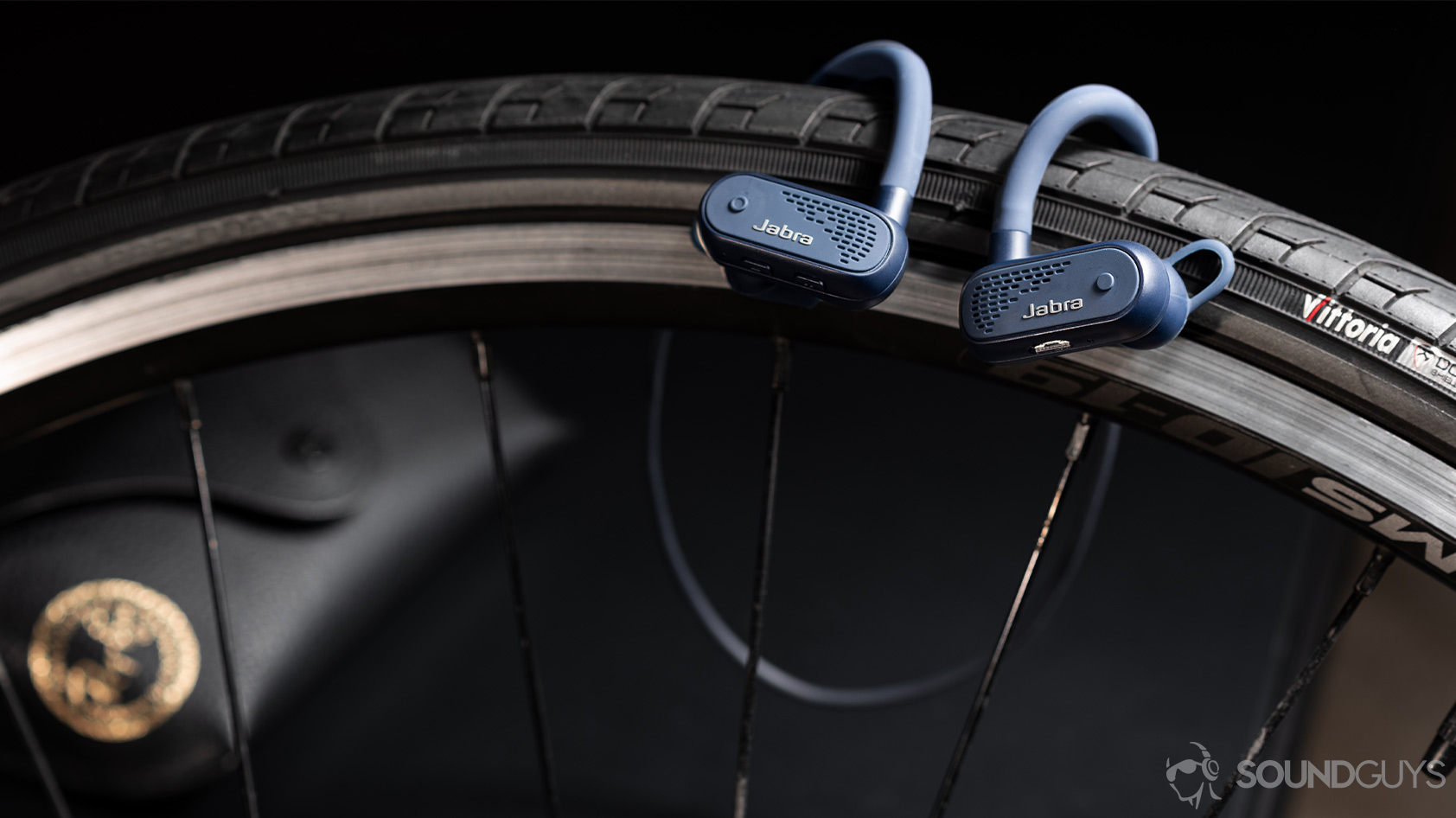
Wired earbuds no longer have a horse in the wireless workout earbuds race, but you still have to choose between true wireless workout earbuds and traditional wireless workout earbuds (these have a cable joining the earpieces). True wireless technology has made huge advancements over the past few years, with plenty of passable options that cost $50 USD or less, and even more totally wireless picks under $100 USD. Even still, you’ll get the better bang for your buck with a pair of traditional wireless earbuds like the Jabra Elite 45e.
Regardless of whether you go with wireless or true wireless earbuds, most workout headsets are made of plastic because it’s more affordable and durable than premium materials like leather, which quickly deteriorates when exposed to sweat. Again, you’ll find that earbuds for exercise typically have some kind of ear wing with tips that seal to your ear canals for a secure fit. Alternatively, some earbuds have an ear hook design like the JBL Endurance Peak II and this is about as secure as it gets.
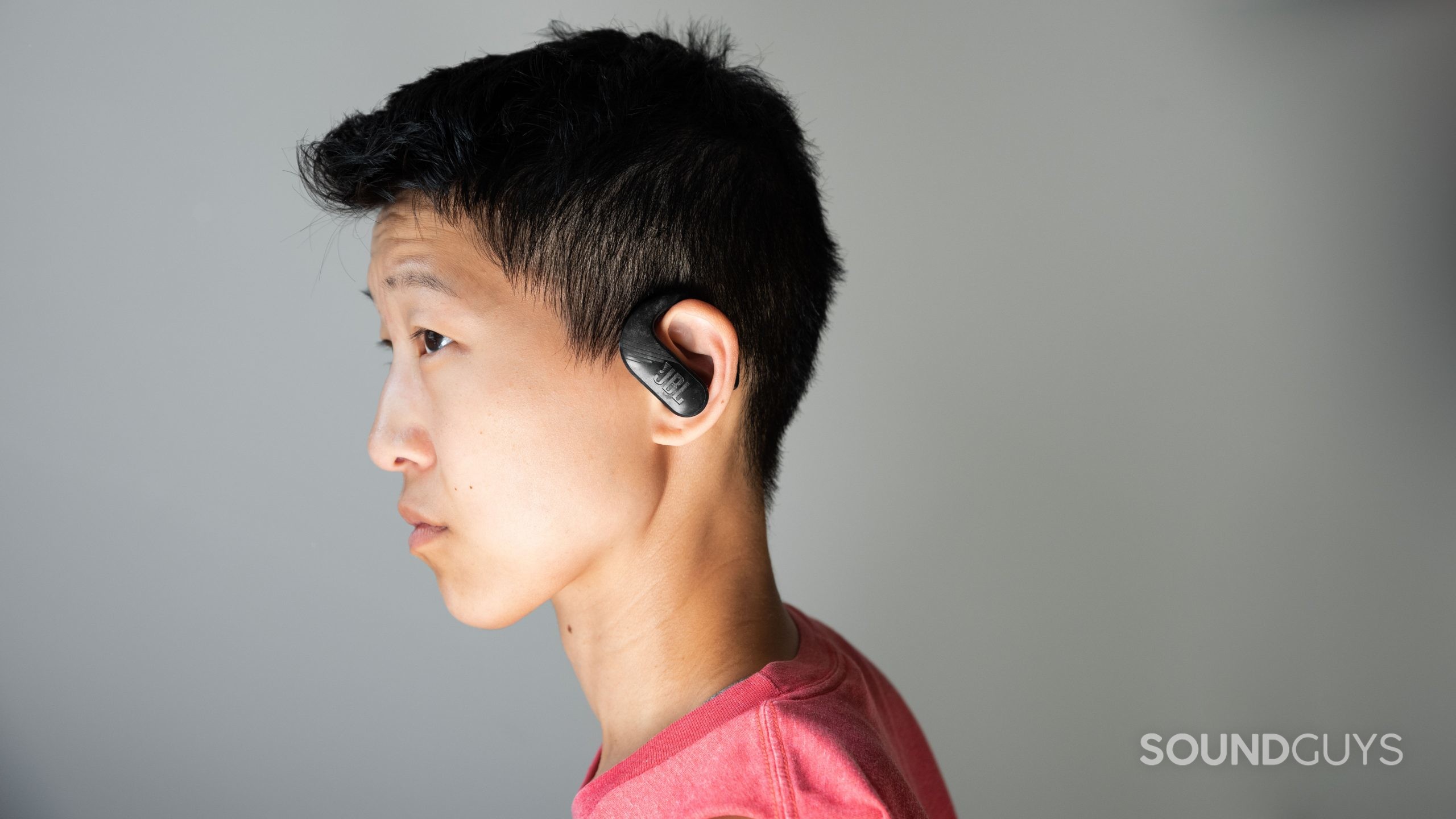
You may find that your earbuds house button controls, but touch controls are becoming more and more common. While there is some convenience to touch controls, they’re harder to operate if you have gloves on. You might also run into the issue of accidental misfires with touch controls—Samsung, we’re looking at you—something that doesn’t really plague buttons.
Fast charging is more important than battery life
If you’re using these earbuds predominantly for exercise, then standalone battery life doesn’t matter too much. Although true wireless earbuds may struggle to perform beyond four or five hours, many neckband earbuds provide at least eight hours of playback before needing a charge. In fact, what matters more than battery duration is quick-charge efficiency.
Headed to the gym? How long do you typically listen to music while exercising?— Sound Guys (@realsoundguys) September 11, 2018
Quick charging typically allows you to efficiently top up a device when its battery level is low. For instance, the Beats Flex uses “Fast Fuel.” This allows the earbuds to provide 90 minutes of playback from a 10-minute charging period. Most of our training sessions don’t exceed an hour, so nearly any headset’s standalone battery life will suffice. But there will be times when you forget to charge the earbuds, and instead of trudging through a silent workout, you can just push it back a few minutes.
Related: How to make your earbuds last longer
What are the best workout earbuds?
Now that we’ve covered the most important and common features of workout earbuds, let’s see what’s the best option for you. If you have time, we implore you to read our list of the best true wireless workout earbuds, best workout earbuds, best running earbuds, and best workout headphones. But, if you don’t have time, here are the hits from each list:
The best true wireless workout option is the Jabra Elite 7 Active
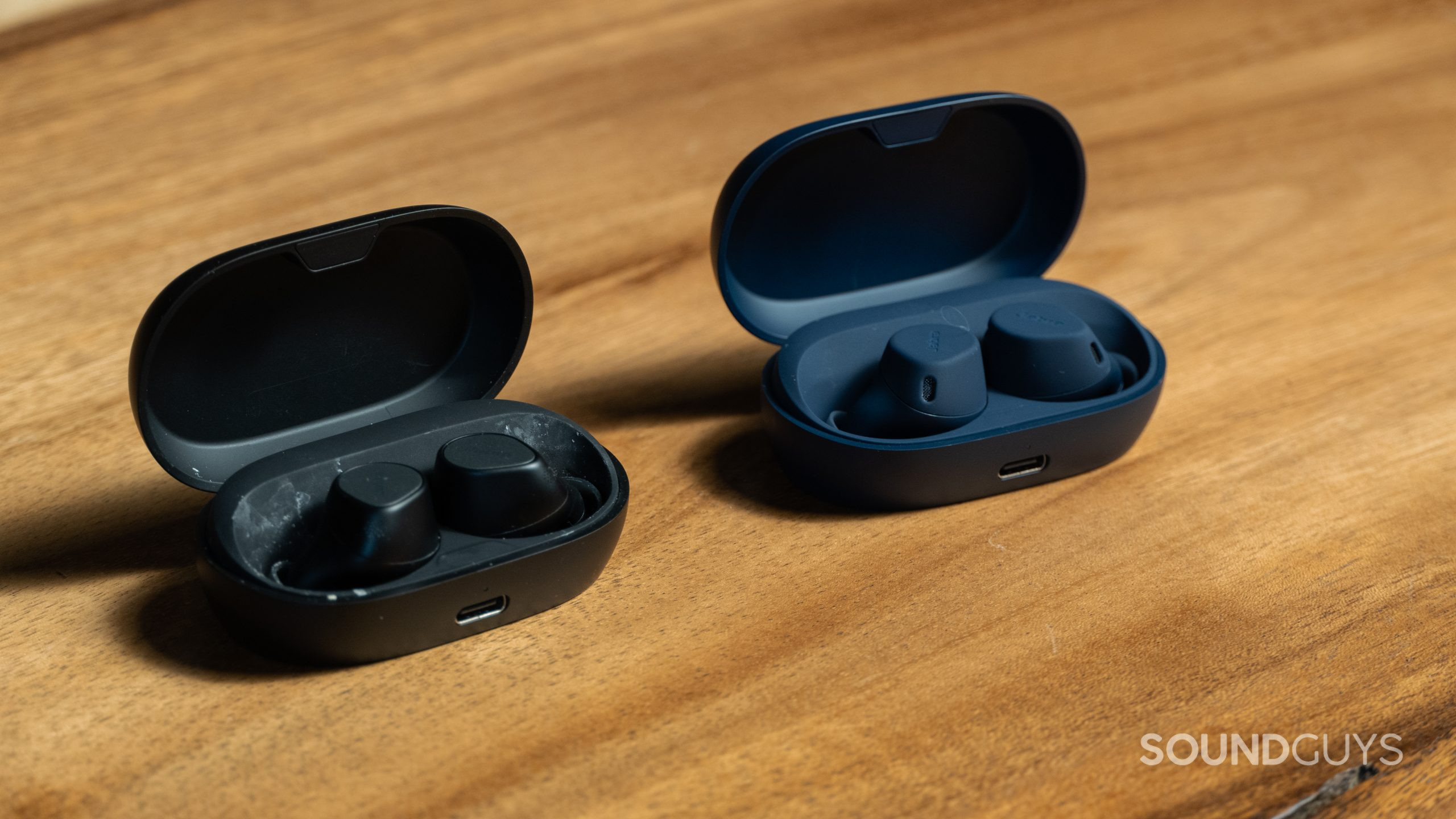
The Jabra Elite 7 Active is a premium pair of workout earbuds that shares the same IP57 rating as the Elite 4 Active. By and large, these earbuds offer the same experience but you get more features with the Elite 7 Active like a wireless charger, automatic play/pause, and Bluetooth multipoint for connecting to two devices at once. The Elite 7 Active is a bit more of a productivity-focused headset than the Elite 4 Active because of its multipoint functionality, but if you don’t care for extra frills, both have the same app experience and offer active noise canceling (ANC). The Elite 4 Active costs quite a bit less though.
The Jaybird Vista 2 is the most durable pair of earbuds
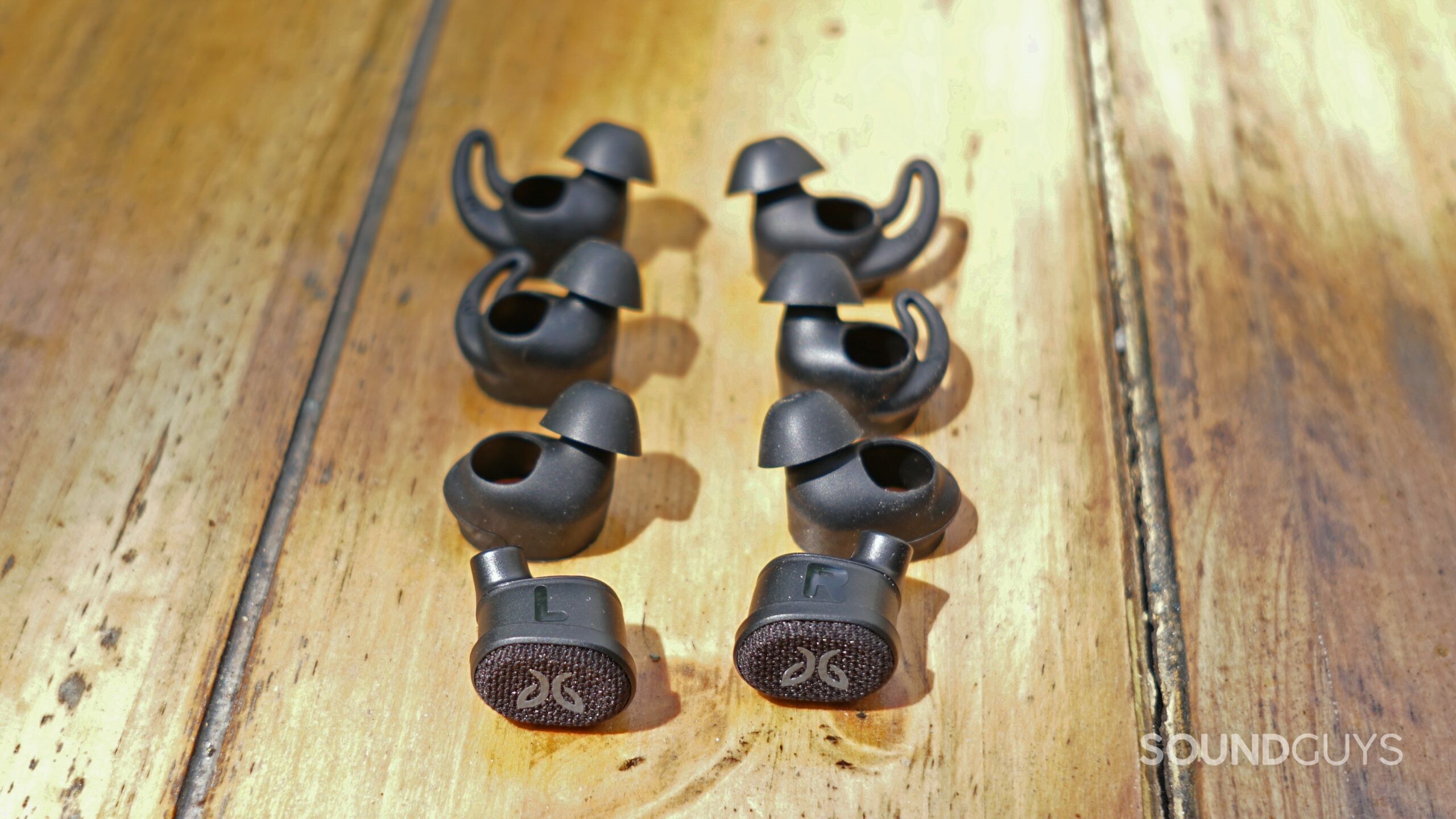
If you want a pair of earbuds that can withstand just about anything, just get the Jaybird Vista 2. Jaybird’s earbuds have an IP68 rating along with an MIL-STD-810G certification. That’s not all, though, as the case merits an IP54 rating so you can really take this anywhere without worry. The earbuds have excellent isolation, meaning they block out plenty of background noise, and you can even toggle active noise canceling on when needed. The frequency response closely follows our house curve and should please most listeners. If you want a bit more bass, you can always equalize the sound in the app (iOS/Android).
The Plantronics BackBeat FIT 6100 is a great pair of workout headphones
Perhaps earbuds aren’t you style, if that’s the case, grab the Plantronics BackBeat FIT 6100 for under $100 USD. This headset has an IPX5 rating and adjustable headband that you can tighten for workouts and loosen for general listening. The battery lasts nearly 27 hours, and you get great fast charging capabilities: 15 minutes of charging supplies six hours of playtime. The catch is that you need to use a microUSB cable to recharge. You get a pretty bass-heavy sound from the BackBeat FIT 6100 and the app doesn’t provide a custom EQ, just three presets to choose from. If you want a versatile headset that you can break a sweat in, this is a solid value.
Frequently asked questions about workout earbuds
Yes, bone conduction headphones can be a great option for athletes, especially if you tend to exercise outside because they keep your ear canals completely open to hear your surroundings. You can read up on our list of the best bone conduction headphones, and if you want to learn about the technology click here.